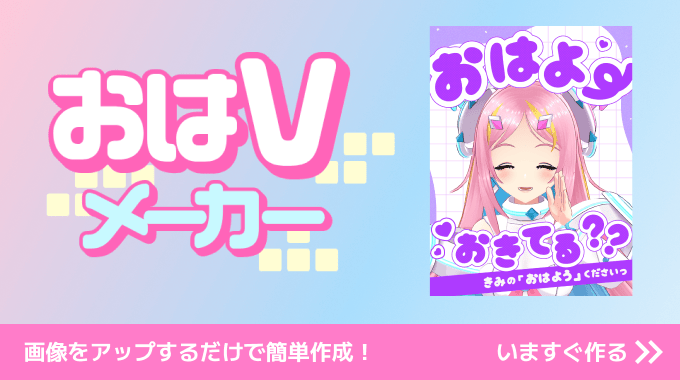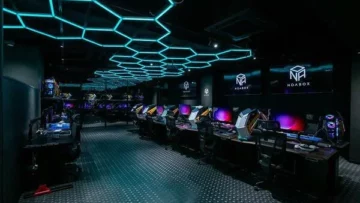VTuber Merchandise Guide: Tips and Tricks for Beginners
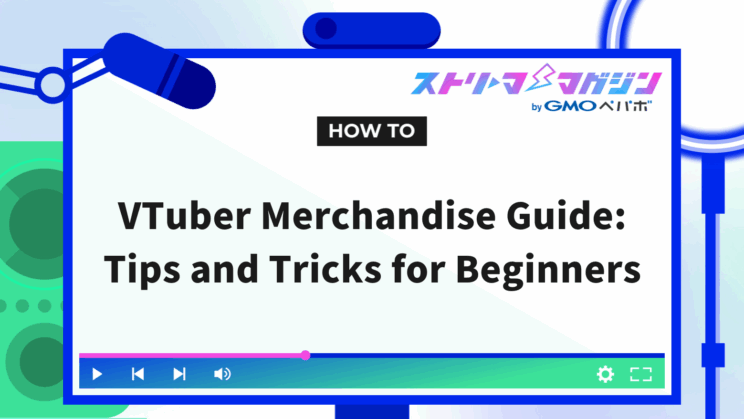
Index
- Three Benefits and Purposes of VTubers Creating Merchandise
- Types of VTuber Merchandise That Are Easy for Beginners to Create
- How Do You Create Merchandise? Three Methods and Cost Insights
- How Do You Sell Merchandise? Types of Sales Methods and How to Choose
- Checklist for Choosing Production Companies and Services
- Cost and Pricing Strategies for Merchandise Sales
- Important Considerations When Selling Merchandise
- Can You Sell Merchandise to Fans Overseas? Key Points Explained!
- Conclusion
As you continue your streaming activities, you find yourself considering at some point, “I want to create original merchandise.”
It can bring joy to your fans, serve as a testament to your activities, and even become a source of revenue. However, when you actually try to do it, you may ponder, “Where do I start? How much will it cost? I’m worried about holding inventory…” and the questions just keep coming.
In this article, I will organize and convey various aspects such as types of merchandise, production methods, and sales strategies, ensuring that beginners won’t stumble along the way.
Three Benefits and Purposes of VTubers Creating Merchandise
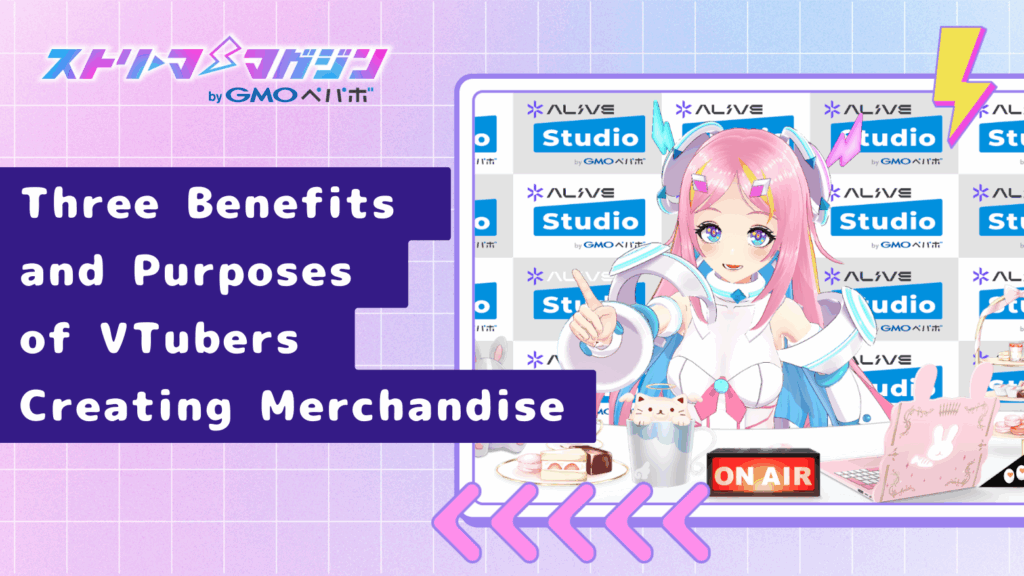
There are three main reasons for creating merchandise.
The first is the closer connection with your fans. The moment supporters who cheer for you on streams or social media hold your merchandise like acrylic standees or badges, they can feel your presence more closely. It’s truly an experience of sharing a symbol of your activities.
The second is monetization. Compared to ads or donations, merchandise has a tangible quality that lowers the barrier for fans to purchase. As sales gradually accumulate, it becomes a significant support for continuing your activities.
And the third is increasing recognition. For instance, if fans wear your merchandise like T-shirts or keychains, others around them might ask, “Who is that character?”—creating opportunities for new people to discover you.
Thus, merchandise is not just an extra but an essential pillar for sustaining your activities in the long run.
Types of VTuber Merchandise That Are Easy for Beginners to Create
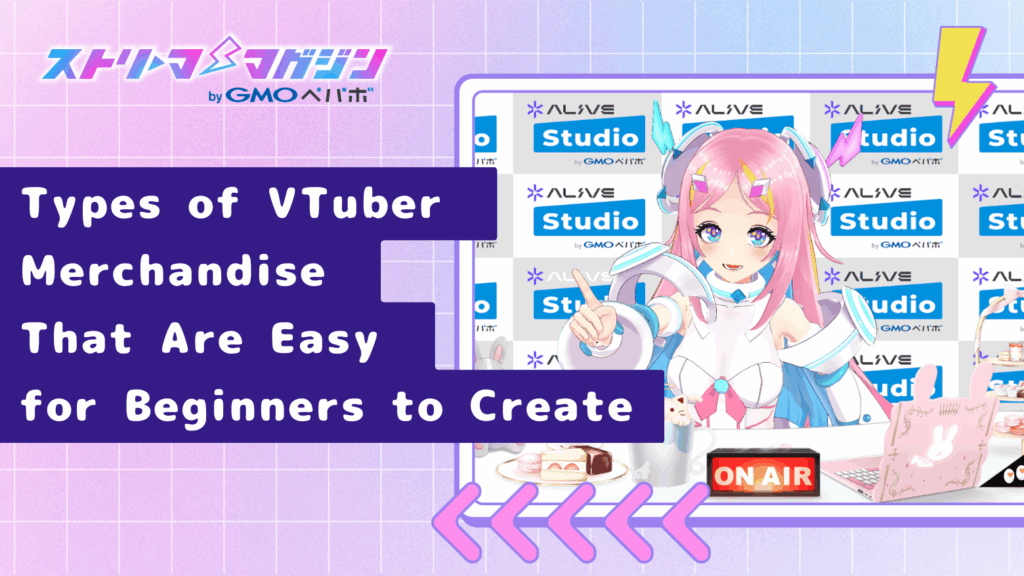
Some may feel that creating merchandise sounds “difficult.” However, there are plenty of staple items that even individuals can start with and that fans will love. For a first step, small items or low-cost merchandise is highly recommended.
Acrylic Standees, Acrylic Keychains, Badges
These are classic staples. They can directly utilize illustrations and are conveniently sized for easy carrying. Whether displayed on a desk or attached to a bag, fans get the feeling of bringing their favorite characters into their daily lives.
Stickers, Clear Files
These have low printing costs and are easy to produce in bulk. They can be distributed easily, making them perfect as novelties for events or test sales. They are suitable not just for sales but also for “creating a small batch first to gauge reactions.”
Apparel like T-shirts and Hoodies
If you’re aiming for a step up, apparel is the way to go. Simply wearing it becomes an act of supporting you, which is appealing to fans. However, keep in mind the burden of size variations and inventory management; starting with on-demand services can be a safer approach. Since items are produced on demand, there’s no inventory risk, but do note that delivery times may vary.
Digital Voices and Illustration Data
Digital merchandise is increasingly popular alongside physical items. By selling recorded voices or original illustrations, you won’t need to hold inventory, and production costs are relatively low. This option carries fewer risks for beginners and is an easier choice to explore.
How Do You Create Merchandise? Three Methods and Cost Insights
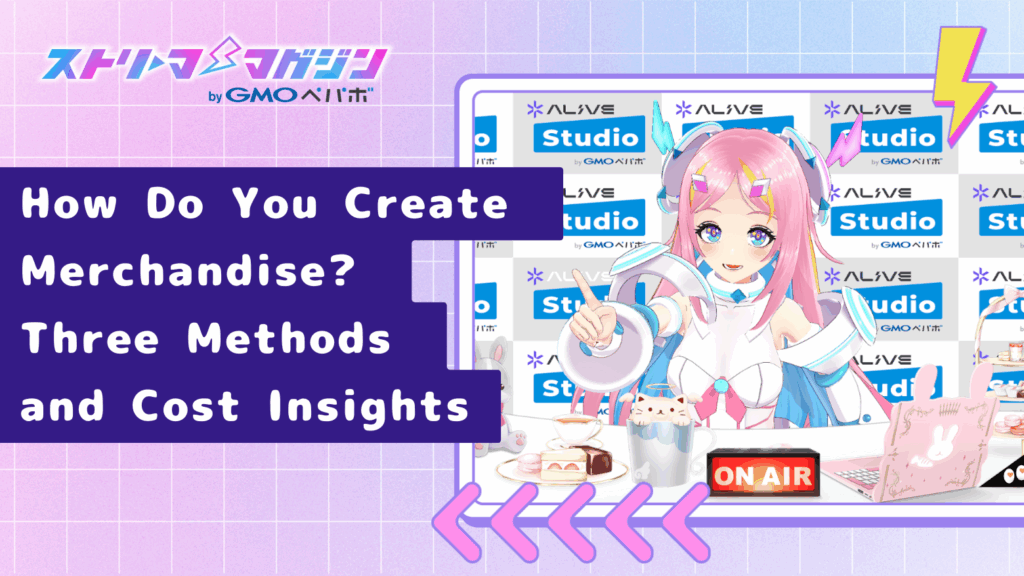
When you think about making merchandise, you may wonder, “What’s the best way to create it?”
The methods I’ll introduce can primarily be divided into three categories, each with distinct features and cost considerations, so choose according to your circumstances.
Ordering from a Production Company
This method involves placing bulk orders with specialized vendors. As quantities increase, the cost per unit decreases, and quality tends to stabilize. However, there is often a minimum order quantity, which presents a risk of holding large stock from the outset. This approach is suitable when distributing to an event or when you already have a solid fan base.
Handmade or DIY Production
You can also produce small quantities using a home printer or DIY kits. The advantage is the ability to test in smaller amounts. However, this method requires a lot of effort and time, and achieving stable quality can be challenging. Thus, it’s best suited for “prototypes” or “novelty items” rather than serious sales.
On-Demand (e.g., SUZURI, pixivFACTORY)
On-demand services have become popular in recent years. You can simply upload your design and place orders starting from one item, thus avoiding the need to hold inventory. The costs are typically zero initially, as commission is deducted only from the sold items. While the cost per item may be higher, this method minimizes the risk of loss, making it a recommended first step for beginners.
How Do You Sell Merchandise? Types of Sales Methods and How to Choose
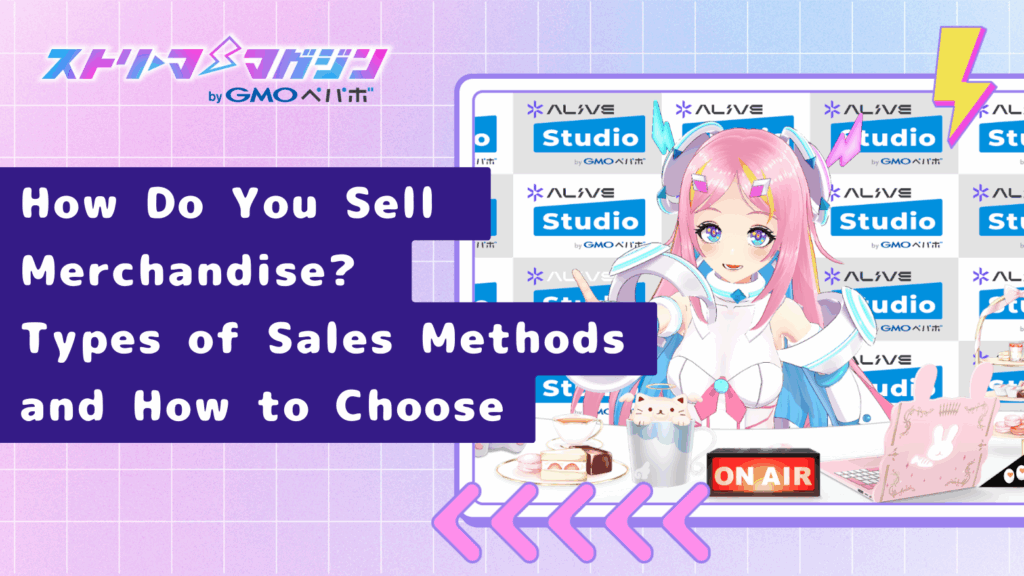
Once your merchandise is complete, it’s time to think about how to deliver it to your fans. There are several ways to sell, each with its strengths and weaknesses. Here, I will introduce three representative methods.
Online Shops (BOOTH, BASE, etc.)
The most common method is online retail. BOOTH offers anonymous shipping and on-demand integration, creating a user-friendly environment even for individuals. BASE allows you to create your online store, providing greater freedom for design. Both platforms are free to register, and they charge a fee when items are sold, making them suitable for your initial step.
Made-to-Order and On-Demand Sales
This method produces items only in response to incoming orders, eliminating the need to hold inventory. Using integrations with services like SUZURI or pixivFACTORY, you only need to upload your designs. Manufacturing and shipping are handled by the service, making it beginner-friendly due to zero initial costs. However, individual item costs can be higher, so pricing strategy requires some creativity.
Direct Sales at Events or Meetups
This involves participating in live events and directly delivering merchandise to fans on-site. In-person interactions are often more energetic, and preparing limited merchandise can create excitement. However, there is also the risk of unsold inventory, and preparation along with managing the event day can be challenging. Nevertheless, it offers a significant advantage by allowing you to shorten the distance between you and your fans.
Checklist for Choosing Production Companies and Services
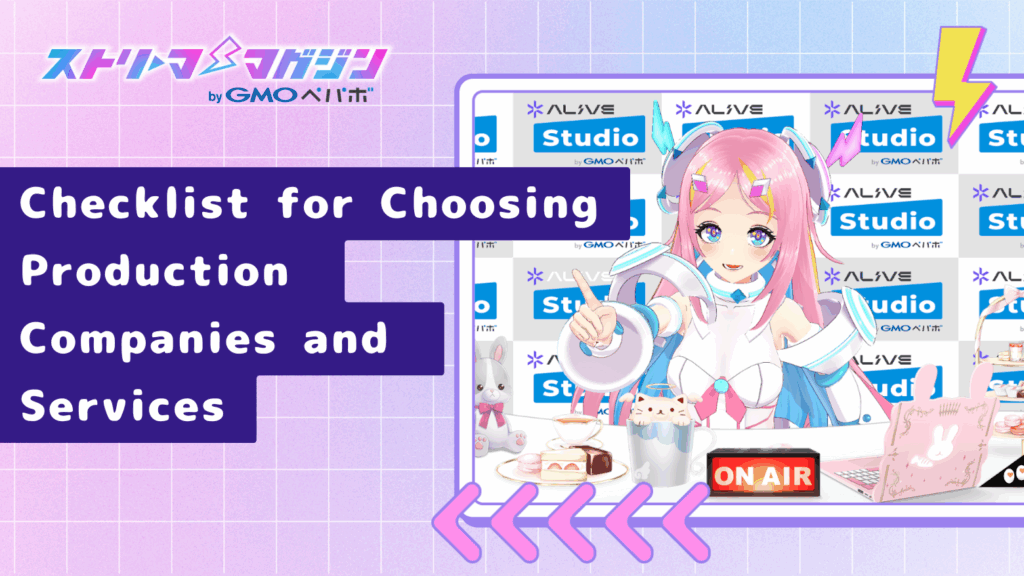
When thinking about creating merchandise, there are countless vendors and services to choose from. It’s not the case that all options are the same. To proceed with confidence, check the following points.
Range of Items and Lineup
If a vendor offers a wide variety of items, it will be easier to expand your lineup in the future. Check to ensure they have a broad selection, including not just acrylic stands and badges, but also clear files and mugs.
Consistency in Quality and Delivery Times
The quality of production can vary between vendors in aspects like printing color accuracy, acrylic thickness, and stitching finesse. Check reviews and samples to assess whether the quality is up to par. Additionally, delivery times might fluctuate based on busy seasons or conditions, so it’s crucial to know the estimated timeline in advance and plan a comfortable schedule.
Availability for Small Batches
For individual VTubers, the ability to create in small quantities is vital. A high minimum order can lead to inventory risks. Many vendors set minimum quantities for badges, so it’s essential to determine whether they allow orders starting from 10 or accommodate on-demand production for one item.
Ease of Quoting and Submission
If data submission is complicated or quoting takes too long, it raises the production hurdle. Check if templates are provided or if online automatic quoting or simulations are available for added convenience.
In summary, successfully choosing a merchandise vendor involves keeping in mind the five points: “lineup, quality, delivery, batch size, and ease of submission.” Start with small batches for testing, and once you’re familiar, find a favorite vendor for long-term collaboration to minimize failures.
Cost and Pricing Strategies for Merchandise Sales

When launching new merchandise, the most pressing question is likely, “How much will it cost, and what price should I set?”
If you proceed without clarifying this, you may end up in the red or give fans the impression that your prices are too high. Let’s explain the key points.
Main Costs to Consider
The first thing to note is your production cost. This includes the unit cost of acrylic or printing, and for on-demand services, there are base costs, while costs for vendor orders can vary based on batch size. Additionally, don’t forget platform fees, transaction fees, shipping materials, and postage as part of your overall costs.
Pricing Strategy
A good rule of thumb is to calculate “cost + fees + shipping + α (profit).” For example, if your cost is 500 yen, fees 60 yen, and shipping 200 yen, you would need to sell for at least 760 yen to avoid a loss. Add the profit you require to support your activities, leading to a sale price around 1,000 yen. Keep in mind that some platforms may charge both a percentage and a fixed fee, so always check the latest specifications of each service prior to calculations.
Balancing Profit Margin with Pricing
It’s important to balance a price that is accessible to fans with the profit margin needed to support your activities. Badges and stickers may sell for around 500 yen, acrylic stands for about 1,000 to 1,500 yen, and apparel typically exceeds 3,000 yen; it’s wise to adjust based on market standards as a reference.
Market pricing can vary significantly based on item specifics and sourcing methods; apparel, in particular, tends to have higher production costs, so stay mindful of that.
The key is to “accurately understand costs” and “design a reasonable price.” Even a rough calculation sheet will help so that you won’t hesitate on what to make next.
Important Considerations When Selling Merchandise
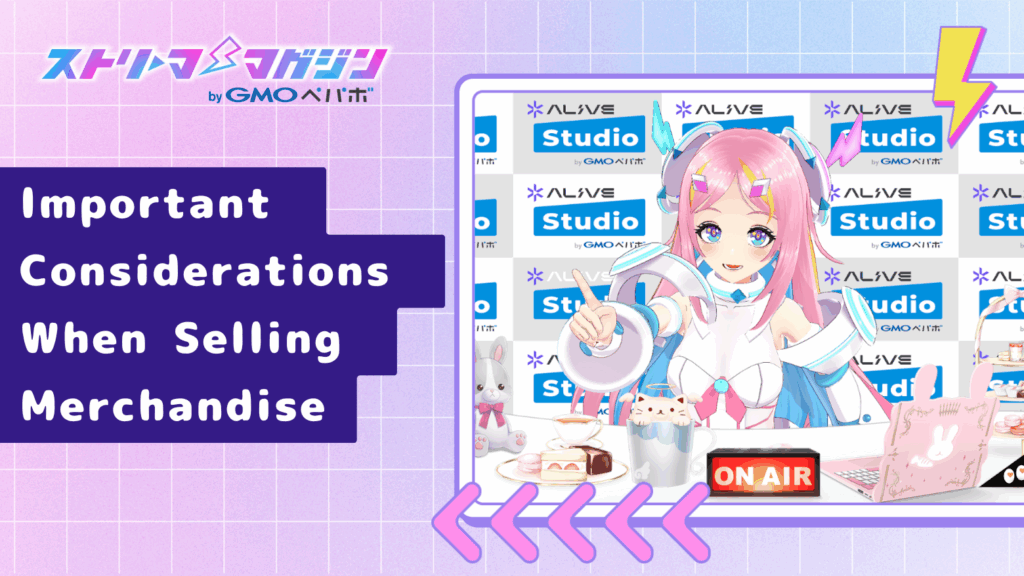
There are several important points to be aware of when selling merchandise. Here, I’ll outline the particularly crucial aspects that will serve as your preparation reference.
Inventory Management
When holding inventory, unsold items can lead straight to losses. Start with a small quantity for testing, and increase supplies based on responses. Make sure to correctly reflect inventory numbers on e-commerce platforms, and pre-determine how to handle sold-out situations to minimize confusion.
Deadline and Schedule Management
If you intend to sell in time for events or anniversaries, backward scheduling is essential. During busy periods, vendors may experience delays, and manufacturing and shipping typically proceed on weekdays. Be sure to place orders with ample lead time, and if delays are anticipated, inform your fans ahead of time to maintain trust.
Fan Interaction and Aftercare
Damaged or defective products are common issues that lead to inquiries. Decide in advance your policy for exchanges or refunds and prepare clear explanations.
Align your contact deadlines and return policies with the terms of the platforms you’re using. A simple shipping notification or thank-you message can significantly enhance customer satisfaction.
Can You Sell Merchandise to Fans Overseas? Key Points Explained!

Some may want to reach fans overseas who are tuning into your streams, not just within Japan. However, selling internationally involves additional considerations like shipping, language, and customs. Let’s look at specific points to be mindful of in this context.
Choose Platforms that Support Cross-Border Sales
BOOTH and BASE can adapt to international sales by leveraging integrated services and applications. Particularly, if you enable proxy purchasing services (like Buyee integration) on BOOTH, it allows for smooth transactions from purchase to international shipping, making it relatively easy for individuals to start. First, check how the platforms you’re using support overseas sales.
Innovation in Shipping and Packaging
Shipping overseas often takes time, increasing the risk of damage. Incorporate extra cushioning materials or double-walled cardboard in your packing. Additionally, prohibited items vary by country or region, so be certain to check your shipping provider’s guidelines in advance.
Language Support and Assistance
Adding a brief explanation in English on your product pages is helpful. Clearly state estimated shipping times and the conditions for return, along with noting that customs duties and import taxes may be the responsibility of the buyer. You don’t have to translate all inquiries but utilizing automatic translation tools can be sufficient for coverage.
Conclusion
For VTubers, diving into merchandise production is a powerful way to bridge the gap with fans and sustain your activities over the long term.
It’s perfectly fine to start with classic small items like acrylic stands or badges, or to test while minimizing risks using on-demand services. What’s crucial is not aiming for perfection from the start, but rather selecting methods that align with your scale and budget.
Moreover, there are many points to think about, such as pricing strategies, inventory management, backward scheduling, and even considerations for overseas sales, yet organizing these step by step isn’t difficult. In fact, managing these details carefully creates an environment where fans feel comfortable making purchases, leading to long-term affection for your activities.
Start with a small step. Whether it’s prototypes or on-demand sales, transforming your unique world into tangible experiences is a valuable step toward your next challenge.



